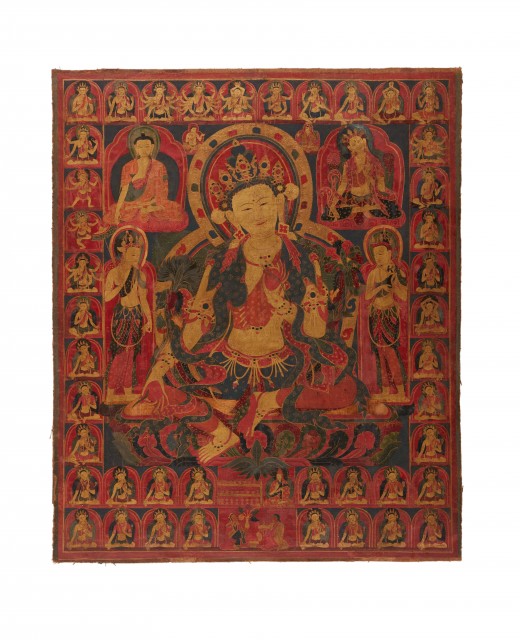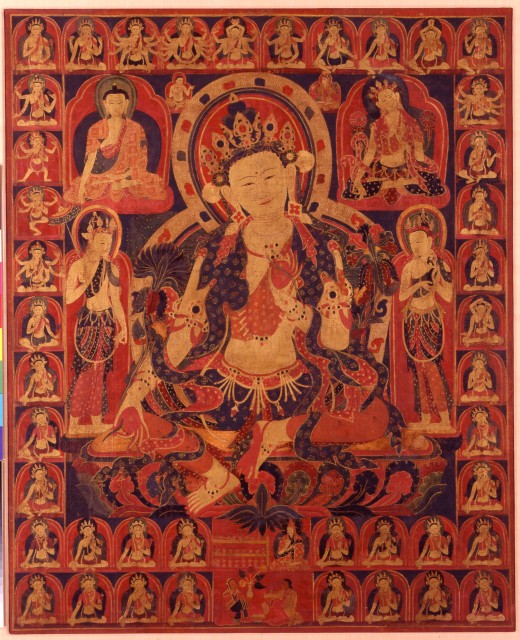
Green Tara

Photography by Synthescape, Digital image © Asia Society

Photography by Roman Szechter, Digital image © Asia Society
Green Tara
14th century
Tibet
Opaque watercolor with gold on cotton
H. 30 3/4 x W. 25 in. (78 x 63.5 cm)
Asia Society, New York: Mr. and Mrs. John D. Rockefeller 3rd Acquisitions Fund, 1991.1
Licensing inquiries
In Sanskrit, Tara means "star" or "constellation," and thus her name emphasizes her role as a guide and saviouress on the Buddhist path to enlightenment. There are many forms of Tara (forty-six different manifestations of her appear on this painting), but the central image, Green Tara, can be identified by her posture, with her right leg pendant, and by the blue lotuses she holds, one open and one closed, in either hand. Above her left shoulder sits her other main manifestation in Tibet, White Tara, while Shakyamuni Buddha sits above her right shoulder. Green Tara is sumptuously dressed in an array of silk robes and wears pants decorated with finely drawn miniature Taras in roundels. Most of her golden jewelry and her mandorla are created in relief and would have shimmered in the light of yak-butter lamps. The patrons of this painting, a man and a woman, appear in the center of the bottom row of figures, making offerings to Green Tara. Above them sits a monk from the Sakya order of Tibetan Buddhism, possibly the person who consecrated the painting.

